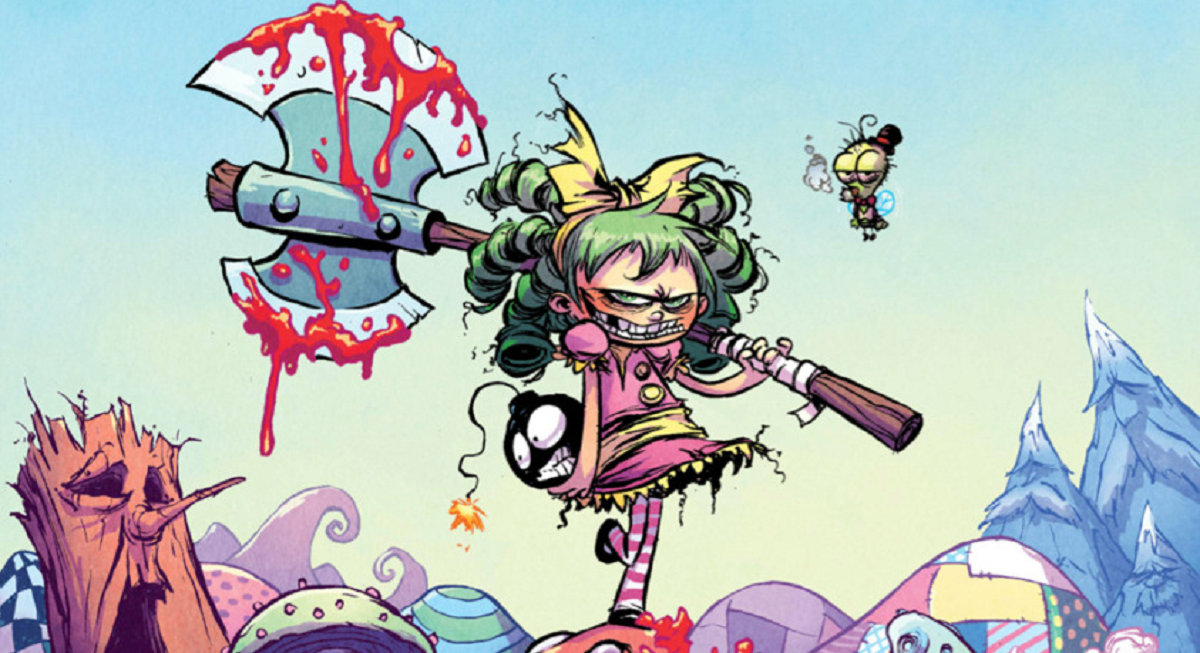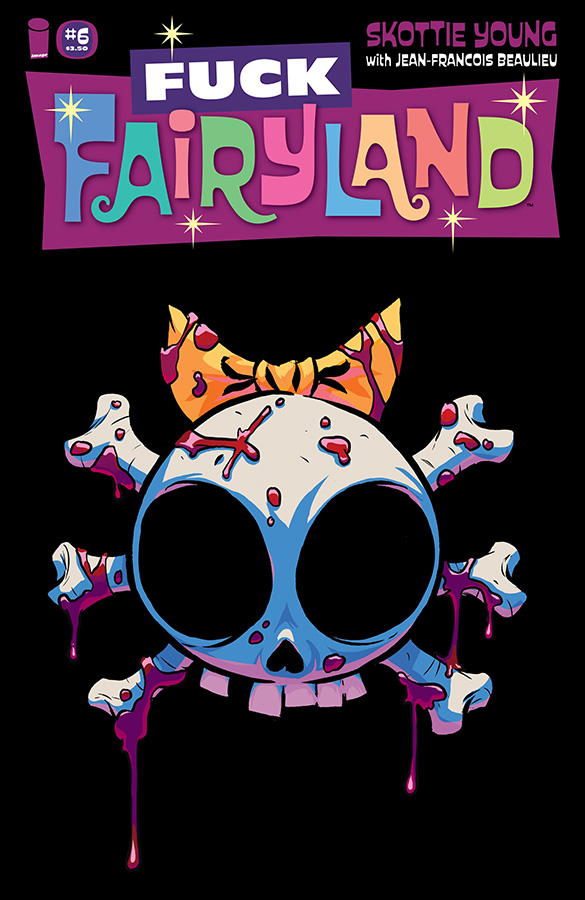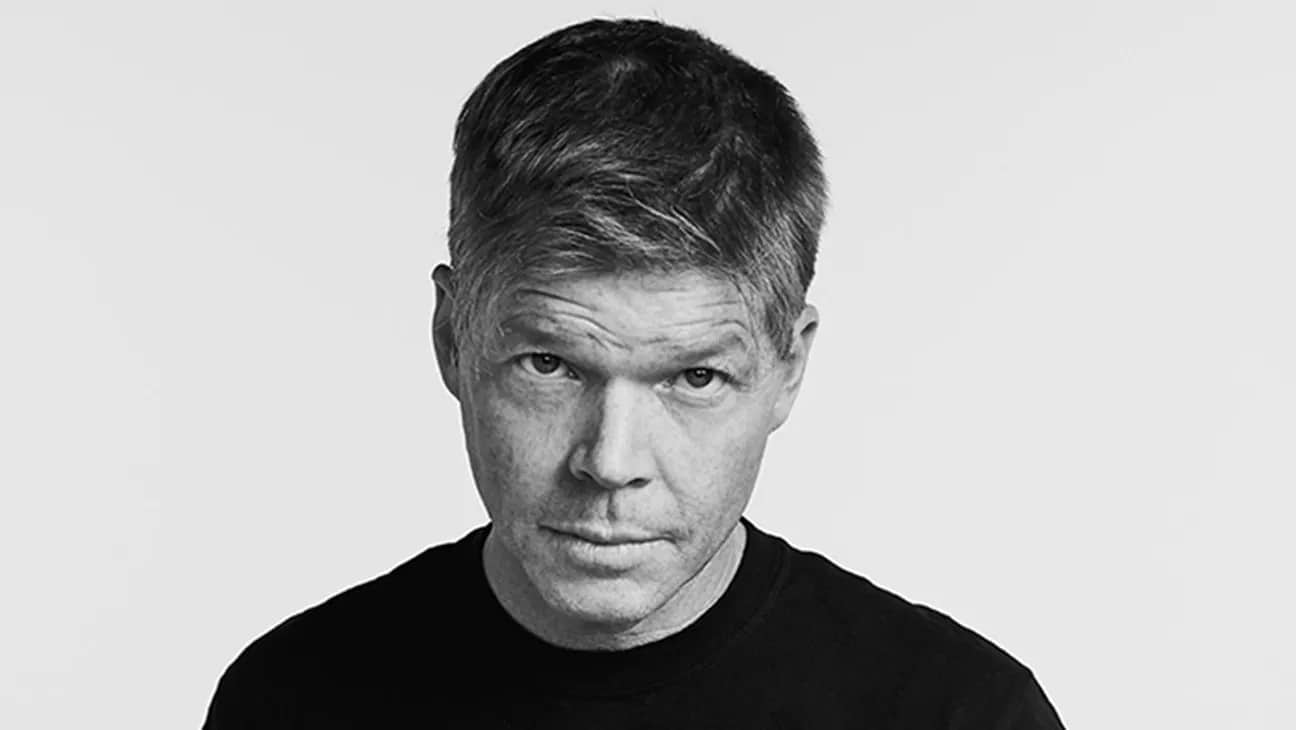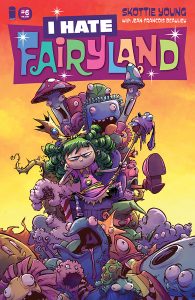
In 2015, Young launched his first creator owned book, I Hate Fairyland, through Image Comics. A hilarious and irreverent take on the fairy tales we all grew up with, this series focuses on a young girl named Gert who wants nothing more than to have a grand adventure in a magical world. However, when she gets her wish and winds up in Fairyland, she finds it impossible to complete the quest assigned to her and ends up trapped, mentally aging over the course of thirty long and torturous years while her body reminds petite and sprite-like. Now, as a jaded adult who still looks like a child, she takes out her frustration by binge drinking and ruthlessly murdering the adorable inhabitants of Fairyland.
I Hate Fairyland recently wrapped its first arc and was collected into a trade paperback edition. Tomorrow, the series returns with issue 6, which marks the start of a brand new arc! In celebration of one of the most critically well received and financially successful Image books launched in 2015, the Comics Beat sat down with Young to talk about his experience working on the series and what sorts of zany places we might see the book go in the future.
Alex Lu: As your first creator-owned book, how has the experience of working on I Hate Fairyland been?
Skottie Young: I have been drawing comics for about fifteen years professionally so I have had a great time and have zero complaints about what I have done so far, but when you just get to walk into your car and drive directly to your destination every day– there’s nothing more freeing than that. You sit down at the table and make stuff up and throw it in a few other people’s hands to make sure you get rid of those typos, but other than that, whatever is in my head will be printed on the page and go directly into people’s hands. It is just the best.
Lu: We’ve been seeing more and more Image books get editors, does I Hate Fairyland have like an informal set of editors that you have worked with?
Young: Not really. I vet stuff through my buddies. I would say the closest person that has any sort of story input is one of my best friends, Jason Howard (Trees, Super Dinosaur). Jason has really sharp instincts and he is really close– pretty much every idea that I have, I will fly it by him. He will either laugh or say: “well what if you did this.” He is a good sounding board for me to just verbalize. Sometimes you get an idea and saying it aloud, you realize it doesn’t sound like it did in your head.
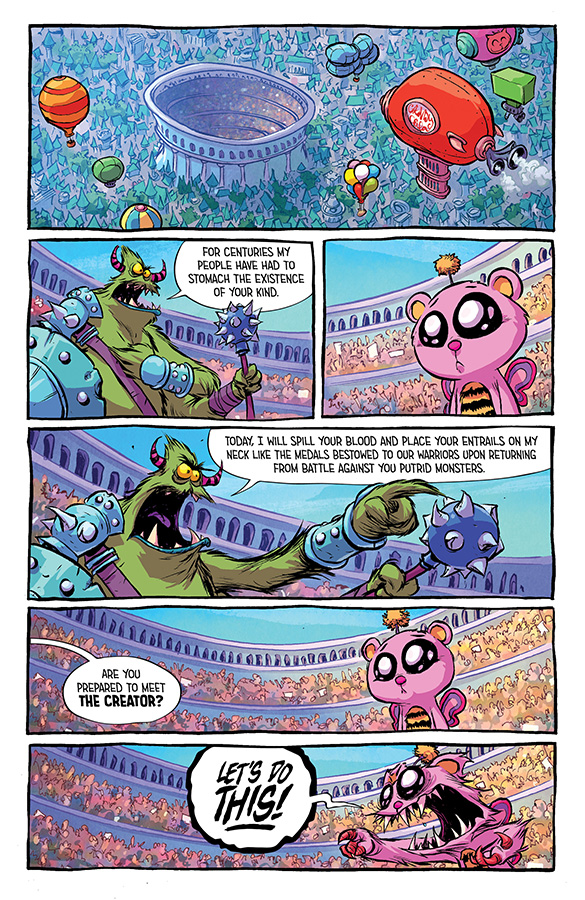
Lu: I Hate Fairyland has been very critically and commercially successful–it has been one of the most acclaimed Image books of 2015. What has the response been like from fans you interact with?
Young: It has been amazing– better than I could have ever imagined. I was a little bit worried about this book because it looks like it is for kids, but it isn’t. In a world where very heavy series like The Walking Dead and Saga are the hottest books, I didn’t know if a humor book jammed with a lot of ideas was going to work.
People seem to enjoy the fact that, when they buy their stack of comics, they can read this as a break between the serious books. Personally, I feel the same way. When I read five really heavy, serious books, I have to mix a fun one in. For every couple East of Wests and Black Sciences, I’ll read an Invader Zim.
Lu: Has anything about the fanbase totally surprised you?
Young: No– the interesting thing about my career is that I seem to have a very wide audience. Ever since I started doing the Oz books in 2008 and 2009, my audience really started to come out of the wood work as very broad. It ranged from kids to women to boyfriends to wives to grandparents. My variants for Marvel also have such a wide audience. My work isn’t aimed at any one person or any one demographic– it is aimed at them all.
It proves that our industry is very healthy right now. It’s great to get to meet so many different kinds of people who like my work.
Lu: Can you name a breakout character from the first arc of I Hate Fairyland?
Young: This first arc is so focused on Gert, so it is hard for people not to gravitate towards her. So far, there’s been four or five people who I’ve seen cosplaying as Gert. I’ve seen a mom, a nine year old, and even two men dressed like her! Everyone gets a chuckle out of Larry with just how disconnected he is, but I would say that Gert is the stand-out.
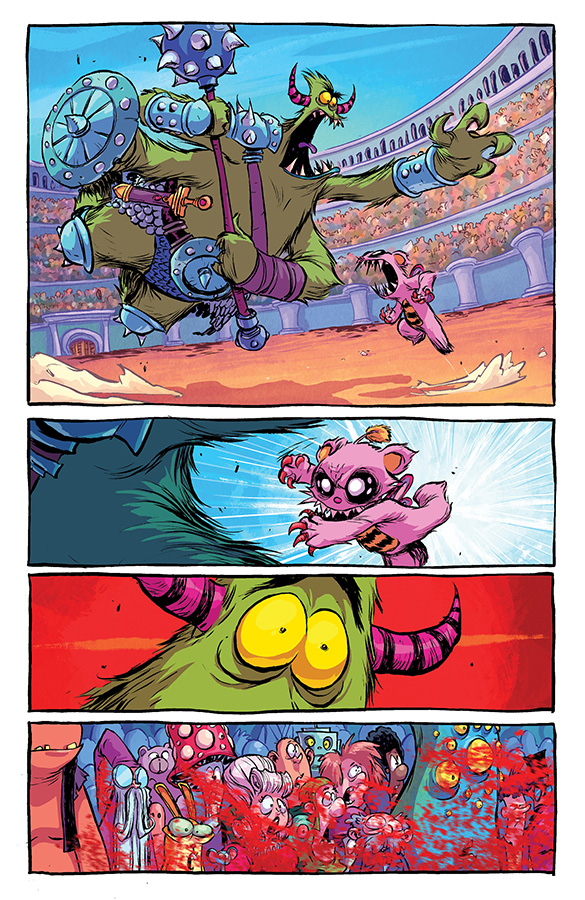
Lu: It’s funny that you mention Larry because one of interesting relationships in this book is between Gert and Larry. I know that Larry is essentially an indentured servant to Gert, but it also seems like he legitimately cares about her in spite of his disconnect from the world–am I reading that right?
Young: Yeah, I think you are reading that right. As weird, off the wall, and wacky as I Hate Fairland is, I think there is some truth to the story. I think a lot of relationships are more like Gert and Larry’s rather than Rocket and Groot’s. You see a lot of super bro relationships in fiction, but you probably see a lot of relationships in real life that are like: “Yeah, we’ve known each other for a long time and are probably going to get beers today, but I don’t even know if I like you anymore.” People like that went to high school together or worked together, and now they feel this sense of duty to one another. There’s a little dark truth in that sort of sentiment. We have to wonder: “Do I really like this person, or are we just bound together by time?”
Lu: One of the big reasons why I think Gert has been so unsuccessful in her quest to leave Fairland is because she subconsciously strives to not get the things she wants. She actively works against herself. That was something that became clear to me after the introduction of Happy, because she manages to do in two days what Gert couldn’t do in more than a decade. I initially thought the journey to escape Fairyland was just difficult, but no– it really is her.
Young: I think Gert is very self-destructive and doesn’t know it. At some points though, I wonder if Gert started off her journey in a negative place or if she just started off scared. I think a lot of kids would be terrified if they were actually pulled away from their home into Fairyland without warning.
On the other hand, you have Happy. Not to sound too artsy, but I believe that if you put good stuff out there, good stuff comes back. Happy comes in and is super joyous about the quest. She takes everything in stride so everything works out.
I have a six-year-old, and he is instantly frustrated whenever things don’t turn out his way. When he gets like that while working on a puzzle or something, I sit with him and wait. I try to teach him that if you are patient, you will get what you want in the end. The bad choice is to throw a tantrum, where not only do you waste a lot of energy, but you also ultimately don’t get what you want. A lot of I Hate Fairyland is about being a dad; working and writing in a kid’s medium.
Lu: This idea of parentage being part of the book introduces an interesting questions, because we haven’t seen Gert’s parents so far. Do you think it’s possible that we could see some of Gert’s family as the series continues?
Young: That’s definitely a possibility. I have plans, but I haven’t quite decided yet if I want to include them. However, I can say that as we go along, we will learn more about Gert– we’ll see glimpses of the girl she was before Fairyland. A part of her just wants to recapture some sense of the normalcy she had before she came to live in Fairyland.
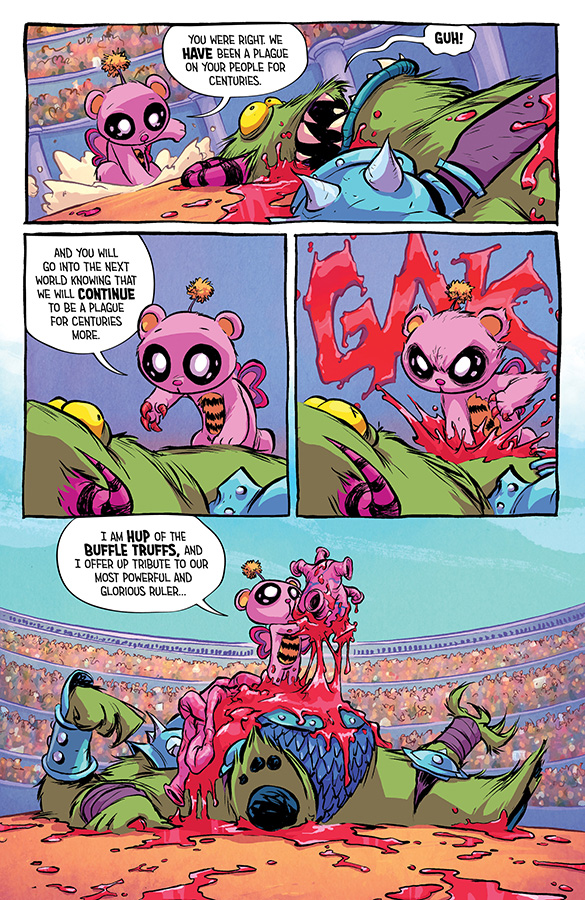
Lu: There’ s a moment in the arc where Gert wishes she could be normal for a little bit and she becomes obese and tumorous because she’s been eating nothing but candy for years. If, at the end of the arc, she had actually made it back to the real world, could she have survived?
Young: Well, that’s a good question, isn’t it? That comes down to whether or not a normal version of her within the constructs of Fairyland would be different if she travels back to her world. Is Fairyland a weird pocket in time or does it move forward normally? Does Fairyland move at all?
Lu: Earlier, you mentioned you saw two guys cosplay as Gert. It sounds funny, but in early interviews about I Hate Fairyland you mentioned Gert was originally conceived as a guy.
Young: Yes, originally I wanted to tell a story where Gert was a boy. I wanted to drop him in Fairyland and come back thirty years later, portraying him as a full grown man. That idea came from my love of Lobo and Tank Girl. The original elevator pitch was, essentially: “what if Lobo was in Wonderland?”
However, as I developed that idea, the book started to veer too far away from humor and too far into brutality. The goal of I Hate Fairyland was not to tell a hyper-violent story, but to explore a world the character just sees as annoying. I turned the character in a woman and then a girl. I thought it would be funny to put a big axe into Alice’s hand and have her act lead Deadpool. There’s a lot of humor to that!
Lu: Making Gert a child is an interesting visual juxtaposition given the premise that you had.
Young: I developed this series for about five years. Over that time, the core truth of this narrative started to reveal itself to me. It’s about capturing the inherent weirdness of being an adult that works in comics. I’m almost forty, but my house is filled with toys I draw little baby versions of Marvel characters at work. I’m 6’4 but you will probably catch me watching re-runs of Teen Titans: Go or Uncle Grandpa.
Lu: How is the second arc to I Hate Fairyland coming along?
Young: I am writing seven and eight. Then I will start drawing some of seven. Geoffrey Chamba Cruz is going to do some of issue eight for a fun stylized story sequence. Geoffrey worked on a lot stuff Street Fighter stuff with Udon– he’s just an amazing artist. His art has kind of an anime flair to it. I am utilizing his skills very much– I just had an idea for a story and I thought: “Man it would be really cool if something happened and the look of the book changed.” Instead of trying to emulate the stylistic change, I decided to get an artist with a different perspective.
Lu: That sounds fantastic– very free-form.
Young: Absolutely, it’s part of the great thing about doing these Image books, you don’t have to ask people for permission, you get these wacky ideas in your head and you just go for it. The nature of my book is that it is a wide open world where I can tell a different story every issue if I want to. There is no end to the lands that [Gert] can discover. It is easy for her to travel around and find something like a Fairyland blood sport tournament, you know? It’s very fun that way.
Lu: As I Hate Fairyland moves into its second arc, where can we expect to see the series go?
Young: As I was getting ready to go into the second arc, I talked to Jason Howard. He told me that “it seems like you did your movie with the first arc. Now it looks like you’re ready to transition into your television show.”
One of my favorite parts about Tank Girl is that every story is basically a vignette. I Hate Fairyland was originally conceived that way– every story would be set in the same world, but would only be a few pages. Now I’m ready to actually do that. One of the key things I didn’t get to do in the first arc of the series was explore the weirdness of Fairyland, so in the future I’m going to do that. It’s going to be less driven by big plots. Each issue will be a little story with an overall thing to tie the stories together over time. In one issue, we might catch Gert playing poker in Las Fugus and end up lost inside Larry’s hat. In another issue, we could see her end up in a Street Fighter blood sport tournament. All these things can happen because the world is endless. We’re going to focus on the character and her mishaps and adventures. We’re going to slow down and unfold a big plot slowly over the next couple arcs rather than stuff it into five issues– like a TV show. It keeps things fresh for me and for readers.
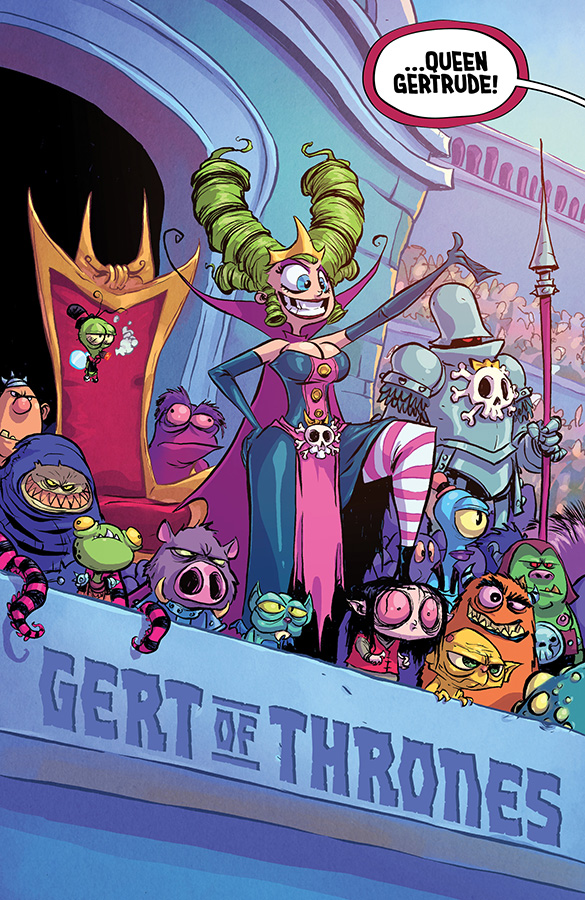
Lu: One of the interesting doors a looser plot structure opens is the possibility of separating the story from Gert entirely. I know that it’s hard to imagine, given how Gert-centric the first arc of I Hate Fairyland was, but could we see issues of the series where she doesn’t even appear?
Young: Oh, absolutely! That’s a big reason why I’m transitioning into this old-school way of doing comics. That’s how I remember comics being. You could just pick up a title and it would take you on a ride. You couldn’t predict where it was going. Once I take the series off the rails, it loses its predictability because I don’t have to put a cliffhanger at the end of every five-or-so issues. It allows me to do crazy stuff like have a reader pick up and issue and say “oh my god, there might be a new main character!”
This is Fairyland. Anything is possible. There were people here before Gert and there might be people here after Gert. Fairyland is as old as time, so we might meet characters who walk around collecting items left behind by past guests from Fairyland. They’ll have built a shrine dedicated to all the kids that were there. There are also background characters we’ve already met who we might see front and center.
Lu: One of the best parts about this method of storytelling is that it fulfills this need that most comics nowadays don’t– the need to feel like you’ve gotten closure from a story from month to month. Most heavily serialized books are hard to read from month to month because you tend to be left feeling a little hollow, waiting for the next plot point or resolution to come.
Young: I’m glad I can try to fill the hole that heavily serialized books have kind of created. I try not to do anything reactionary, but rather do things I am inspired by. If they fill a gap, that’s great. However, I agree with you that as I started working on I Hate Fairyland, I saw this gap in the market and was inspired by that. I really wanted to work on something that reminded me of older books like Spawn. I don’t know if that’s the greatest literary example, but I really enjoyed it as a kid. There would be random issues like the Christmas issue where a kid just has his presents stolen so Spawn brings him presents. In another issue, Spawn is in the forest and has to fight these crazy racist Klan members. All these little things would happen, but then something huge would happen and you’d have an explosive arc. Hellboy is a great example of this too! It’s very close to what I am going for in I Hate Fairyland.
Lu: This all sounds very cool. I’m excited to see where I Hate Fairyland goes because I’ve had so much fun with it so far.
Young: Well, thank you! I really appreciate it. It really comes down to me making sure that a humor book doesn’t overstay its welcome. It always needs to stay fresh and be as funny as it can be without becoming predictable.
I Hate Fairyland volume 1 is out now. The series returns with issue 6 tomorrow!


